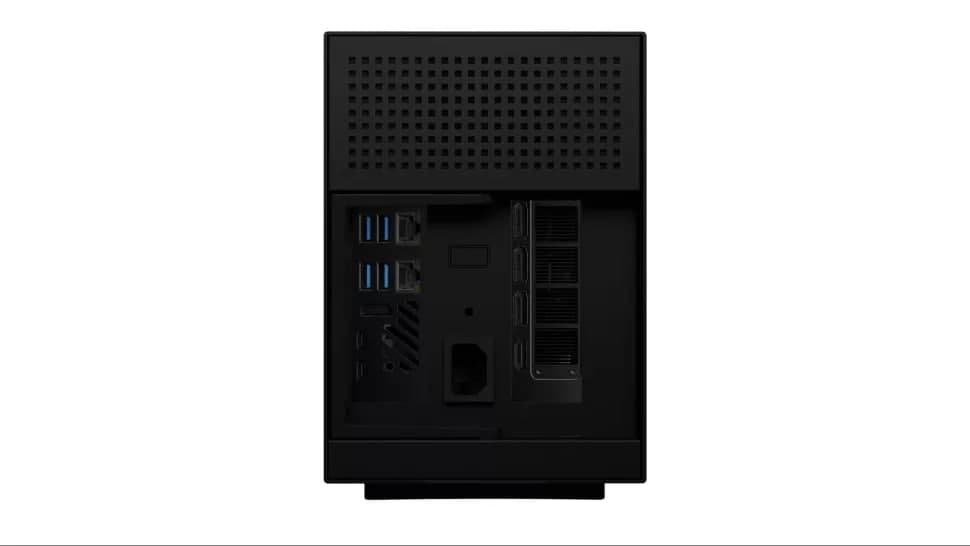Razer: New Product
Razer after eleven months of the day we saw CES 2020 is launching the Razer Tomahawk Gaming Desktop which is a tiny PC powered by an Intel Compute Element with an Intel Core i9-9980HK in a 10-liter chassis. For this month Razer’s website has the PC available for pre-order.
Tomahawk Gaming Desktop has two versions, one having an unpopulated PCIe x16 slot for you to bring your own choice of GPU while the other is the Compute Unit with an Nvidia GeForce RTX 3080 Founders Edition. A noteworthy point of consideration is that if we need to buy one of the form factors, one would pay $3,199.99 with an RTX 3080 and $2,399.99 without a GPU. This price line is much more expensive than many of the best gaming PCs.

This CPU has been supplanted by 10th Gen Comet Lake H-series chips which is a bit long in the tooth as those never popped up in a Compute Unit. It’s quite unclear for the point that Tiger Lake H-series processors will be or when be in one of Intel’s modules as they haven’t been released yet.
Two Configurations
The two configurations with a 512GB PCIe NVMe SSD paired with a 2TB HDD at 5,400 RPM are identical otherwise. If someone wishes to add more storage, then there is an additional M2 slot. In this case, there is a pre-installed 750W PSU with an additional 16GB of DDR4 RAM installed in the Compute Unit.
| CPU | Intel Core i9-9980HK |
| GPU | None, or Nvidia GeForce RTX 3080 |
| RAM | 16GB DDR4-2667MHz |
| Storage | 512GB PCIe NVMe SSD, 2TB HDD (5,400 RPM). extra PCIe NVMe slot |
| Connectivity | Wi-Fi 6 (Intel AX200), Bluetooth 5.0 |
| Size | 24.2 x 19.2 x 1.5 inches (365 x 210 x 150 mm) |
| Price | $2,399.99 without GPU, $3,199.99 with RTX 3080 |
The number of ports available in Tomahawk is largely similar in the most Compute Unit including a headphone jack, two Thunderbolt 3 ports, four USB 3.2 Gen 2 Type-A ports, a pair of Ethernet ports, and HDMI 2.0A. This quite varying that what will be the GPU look like as it depends on if you get the RTX 3080 Founders Edition or bring your own. However one will not find any front panel ports.
Cooling
Two top-mounted 120 mm fans pull air in the side and expelling it through the top beside the cooler on the Compute Unit and the GPU. This time it looks like the case will have an aluminum side with air holes instead in contradiction to the case with a glass side panel back at CES.
The best part about the Razer case is that it is tool-free as we can pull on a door to remove most of the parts on a sled from inside the case if someone wishes to push for an upgrade.
However, 2020 was fairly a quiet year for Intel’s Compute Element push. In the spring, the only desktop spotted for Intel’s new form factor release was Intel NUC 9 Extreme Kit. But with Razer’s case allowing a wider variety of graphics cards at 10 liters, is larger than what Intel brought to the table itself and it has better cooling and expandable storage option.
Compact and Best
If someone looking for a small desktop for a small apartment or dorm room, it should still be the perfect sample of the choice. But the tricky part is that it is still unclear that when the next upgrade of Compute Element is going to comes as you would not be able to replace the CPU.
If an investment of time and space is done on these Compute Units by Intel at a more regular cadence with more CPUs, then many buyers may be benefitted especially for those who are small on space or need to take computers otherwise. But the main challenge is that ITX OCs are not as much upgradeability available right now.




2 Comments
Pingback: DIY Builder Creates World's First 'Breathing PC' Without Using Fans - Craffic
Pingback: Alienware Redesigns flagship Aurora Gaming Desktop on its 25th Anniversary - Craffic